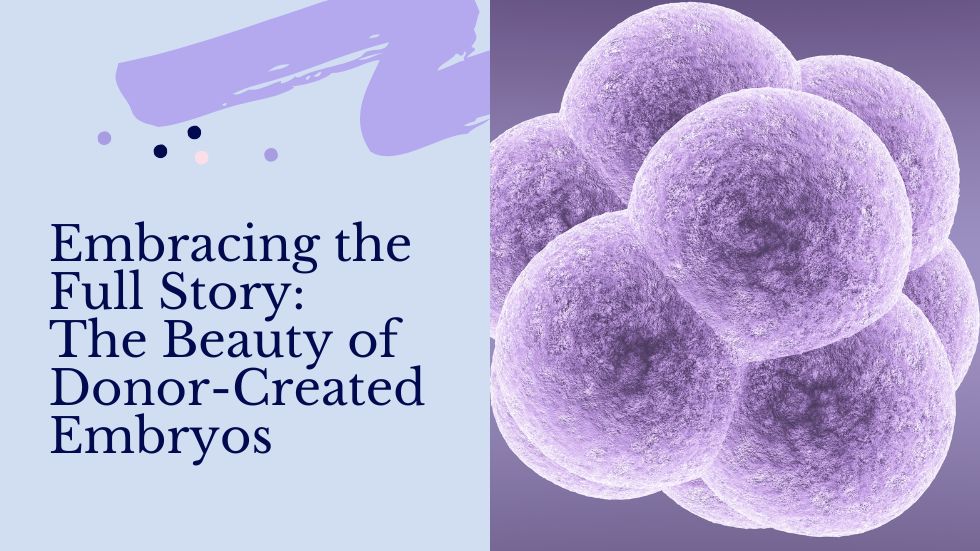Embryo adoption is a path full of complex layers. As awareness of this life-affirming family-building option grows, prospective parents naturally have questions about the origins of the embryos being placed for adoption.
A common question is: “Were donor eggs or sperm used in creating these embryos?”
Some adopting families may prefer to adopt embryos created with donated gametes, while others fear that adopting such embryos would lead to difficult-to-navigate conversations and relationships.
Understanding the full genetic and medical background of an embryo can be a meaningful part of the decision-making process for many adopting families. Below are some considerations to keep in mind when deciding whether to be open to adopting embryos created with donor gametes:
1. Donor Gametes Are Extensively Screened
One of the most significant advantages of adopting embryos created with donor eggs or sperm is the thorough screening process that donors must undergo. According to the American Society for Reproductive Medicine (ASRM), both egg and sperm donors are required to complete detailed medical, psychological, and genetic evaluations, along with infectious disease testing.
This rigorous screening protocol often results in donor profiles that include health and family history, physical and educational background, and sometimes even personality assessments. Compared to embryos donated by individuals who conceived through IVF for personal fertility reasons, donor-created embryos often come with a higher level of medical transparency due to federal regulations and clinic requirements.
Having access to such detailed background information can provide peace of mind for adopting families who prioritize genetic health knowledge or want to be as informed as possible about potential risks.
2. Broadening the Definition of Opportunity
Being open to donor-created embryos is not about choosing a “better” embryo; it is about choosing to be open to more embryos, which often decreases the time it takes to find a match.
Each embryo, regardless of how it was conceived, represents potential, love, and life. While some embryos come with rich documentation and others have limited histories, all deserve equal consideration. Embracing donor-created embryos can simply be seen as widening the pool of possibilities and giving more embryos the chance at life in a loving family.
This openness also allows for the adoption of embryos that might otherwise remain frozen indefinitely, despite having passed all the same safety, health, and ethical standards.
3. Every Embryo Has Inherent Worth
At the heart of embryo adoption is the belief that every embryo matters. Whether created with a couple’s own gametes or with the help of donors, each embryo carries its own story.
It is easy to feel apprehensive about what we see as complexity. Adopting embryos created with donor gametes adds another layer to a child’s history and thus, the adoption story. However, complexity is not the same as uncertainty. In fact, complexity often deepens our appreciation for the miraculous nature of life and the interconnectedness of the people involved in its creation.
Donor-created embryos are not ethically or emotionally inferior to any others. They are simply another expression of the collaborative effort it can take to bring life into the world. Choosing to adopt them honors that effort and reflects a profound commitment to valuing all forms of human life.
Choosing to adopt an embryo is a deeply personal and meaningful decision. For some, the use of donor gametes may initially raise questions, and that is okay. However, by taking time to learn about the safeguards in place and the reasons these embryos were created and later placed for adoption, families may come to see them not as second choices, but as beautiful opportunities.
In the end, every embryo represents a life waiting to be lived. By being open to donor-created embryos, you may be opening the door to the child you were always meant to meet.
To learn more about embryo adoption and donation, visit EmbryoAdoption.org.


Recent Comments